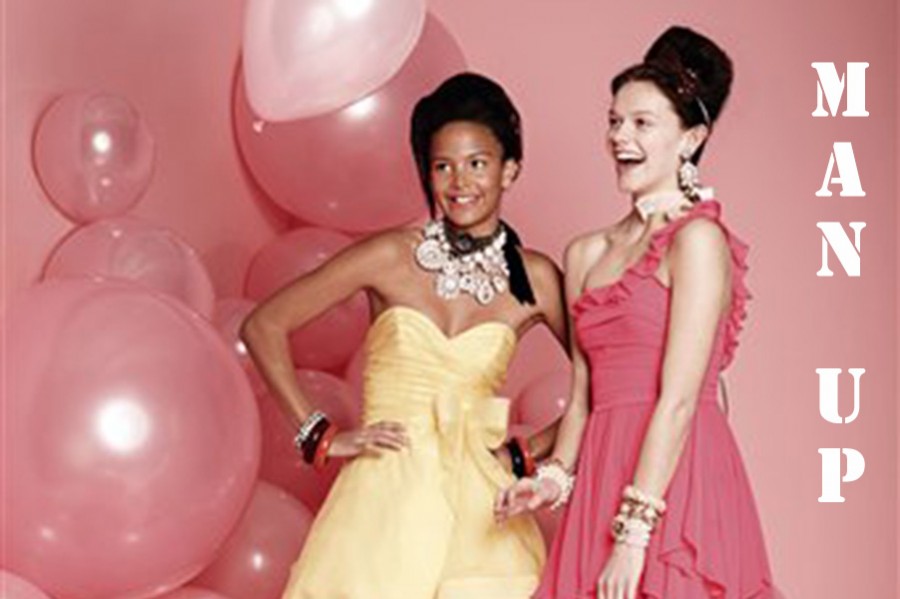Dancing with gender roles
February 18, 2015
Photo by ASSOCIATED PRESS
Last month, a peer of mine at Metea Valley High School wrote a column called “Double standards within school dances prevent successes of Turnabout.” The piece culminates with the line, “So girls, if you want to enjoy Turnabout, respectfully: you need to man up.”
As a writer, I think that line is cute – classic word play! Its creator, Drew Danko, may have even structured his whole column to end with that little man-nugget, which probably earned him a pat on the back from his buds. Even as a feminist, I think this line is cute – cute in the way a little kid explains where thunder comes from, “It’s angels playing bowling!” Adorable, but totally erroneous.
Columns like these contribute to the very gender roles (how boys and girls are “supposed” to act) that, ironically, Danko complains about throughout. In the context of his article, “man up” means “be brave.” This, of course, implies that men are inherently brave and women, by default, timid. The archetypes of the strong dude and the weak chick are so antiquated, yet these worn-out archetypes are ingrained in the dating culture. That’s why “traditionally” boys do the asking and girls get asked (in fairy tales asking is called rescuing).
Being stereotyped as only the rescuer or only the rescued is a tough gig on both sides of the shining armor; these rigid gender norms are difficult for guys and girls. In the comments section of of Danko’s article and in a Letter to the Editor, a lot of people expressed their frustration with the etiquette at the school dance. Girls complained about dropping $40 for expensive manicures and hundreds for dresses, and boys complained about buying tickets and the pressure to pull-off a creative dance proposal. The pressure to conform to dance standards comes from the expectations for how girls and boys are supposed to act (I’m talking about gender roles again!).
When examining gender roles, it’s important to understand where they come from. It’s not as simple as Danko would have you think. “Why can’t a girl fill the role they expect of so many guys? I believe it is that girls do not have the same courage of asking as guys do,” Danko writes. He then goes on to cite a study that reports that, before puberty, boys and girls are at a near equal risk for mood disorders, like depression and anxiety. By mid adolescence, however, that number doubles for girls. While some argue that this is an inherent quality that separates men and women, I’d argue that there are a variety of social factors that would contribute to this disparity.
In a culture that increasingly scrutinizes women for their appearance, it’s no wonder that inheriting a woman’s body means inheriting anxiety. “Miss Representation” reports that the percentage of girls who are unhappy with their bodies increases 25 percent from age 13 to 17. Being not only beautiful, but physically perfect, is the feminine ideal. That would stress me out too. Plus, men being less likely to seek mental health help contributes to that disparity as well. Right around the time the culture teaches girls to be pretty, it teaches boys to be tough.
The study that Danko cites is probably a good indication of the power of social constructs, especially gender roles. These don’t just happen. Take girls’ and boys’ colors for example. Little girls aren’t born liking pink any more than boys are born liking blue. In the same way, girls are not born feminine nor men masculine. Traits are not inherently gendered, humans assign them. Boys are told to be logical, rational, intelligent; girls are told to be submissive, attentive to others, domesticated.
Simply, it’s hard to defy gender norms when the culture, especially media, continues to assign character traits for each gender with phrases like “man up.” If Danko really is worried about the success of Turnabout, it would be more constructive to condemn gender roles that reinforce power relationships in boy-girl interactions rather than mansplain (man-explain) why girls are naturally weak, and then tell them to be as brave as boys.

Ali • Feb 20, 2015 at 7:58 am
Wonderfully well thought out and factually supported piece. Thank you thank you thank you, James.
Nishaad Navkal • Feb 20, 2015 at 12:08 am
Hey James, props for once again saying exactly what needs to be said. You are an inspiration.